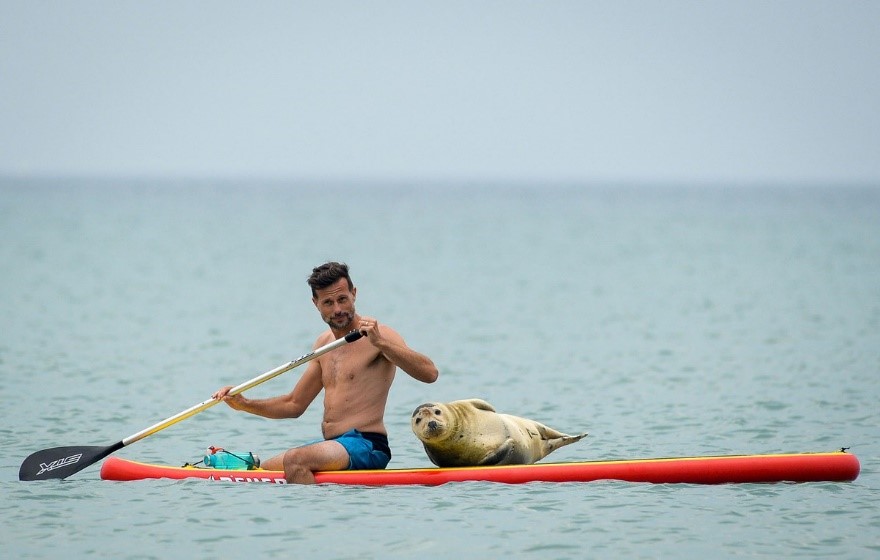
Write down absolutely everything you see in the image. Notice the colors, the objects, every possible detail.
There is a seal and man on the stand-board in the open sea or ocean, both of whom look directly at the camera. The man takes a paddle, and the seal seems to occasionally hitch a ride. The orange color of the board is the brightest color of the photo, while the main color is blue.
Determine the importance of the objects and pictures. Ask yourself why the photographer chose to take this particular image. Write a potential title for this image.
It is possible to suggest that the author made this photo because of the unordinary nature of this composition. The proximity of a human being and wild animal makes this image especially exciting as both of them look natural. However, the author is probably wanted to show that people and animals should coexist, and it is important to be closer to each other. A title: “You are closer to the nature than you think”.
What emotions does this image bring out? How do you feel? What do you think?
This image causes regret for the fact that people significantly contribute to environmental pollution, and animals are often trapped in plastic. Also, I feel that the image calls for a more conscious approach towards the nature to save animals. I think that thus image should be used by the organizations that are aimed to protect the environment.
Consider the message. What is the overall goal? Does the photographer want to inspire? Make us aware? Prevent something? Change?
I think that the author wanted to prove that we can live together and that we should care about t them. It seems that the photographer wanted to motivate people to change, which is made in a positive way. While the majority of authors present frightening photos, this one provides an example of the peaceful coexistence of a human and animal.
Determine who the audience is – the rules of visual rhetoric can be changed based on who the author is speaking to. Different audiences will respond differently. List all the potential audiences, and briefly explain why.
The potential audiences are ordinary people who can be encouraged to use less plastic and sort it. Another audience is companies that can contribute to reusing and recycling plastic.